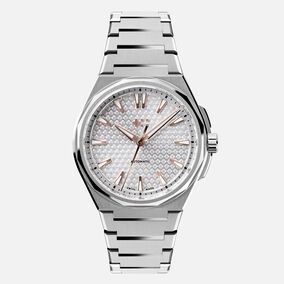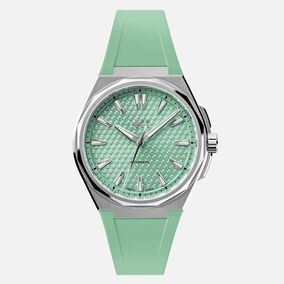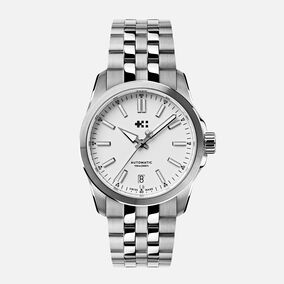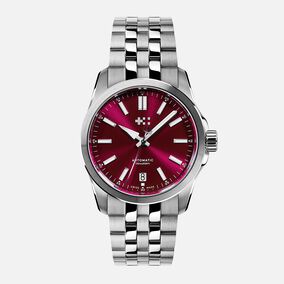London’s King’s Road is a byword for a particularly British brand of cool – but what caused this unremarkable thoroughfare to become the world’s hippest street? Author Max Décharné has the answers
If you love 20th-century pop culture, you’ll have heard of the King’s Road. From the epicentre of the ’60s ‘swinging London’ to the ground zero of punk rock in all its safety pins-and-glue-sniffing glory, the King’s Road has a mythical status for UK arts. In a comprehensive and incredibly entertaining book, author Max Décharné tells the history of this west London street, while here Max talks to Loupe about the people and places that have made it so special.
Hi Max! When did the King’s Road get its global reputation as an epicentre of ‘cool’? It was TIME magazine’s April 1966 article, London: The Swinging City that did it. According to its writer, Piri Halasz, the piece remains the most commented-on cover of TIME magazine in its history. But the article was a flashpoint for something that had been building up for at least a decade. In 1955, Mary Quant opened Bazaar, her first boutique on the King’s Road.I interviewed her for the book, and she said by 1960, she was flying to New York once a month as she was doing so much business in the American market.
It wasn’t just a fashion thing, was it? At one end of the King’s Road is the Royal Court theatre, and in the 1950s you had the ‘angry young men’ playwrights coming out of there with productions like John Osborne’s Look Back In Anger. The idea that a play he wrote while living on a barge on the Thames would be opening on Broadway within two years was unthinkable. A lot of theatre directors like Lindsay Anderson and Tony Richardson also became film directors, making ‘kitchen sink’ dramas like Saturday Night And Sunday Morning and A Taste Of Honey, which became hits around the world. They starred ‘cheeky northerners’ like Albert Finney – and that softened everybody up for The Beatles.
What was the reaction abroad? People started thinking, “Where’s all this happening? Why should we care what’s going on with England?” I’ve got copies of The New Yorker from the 1950s and the only adverts that mention Britain are for shortbread, Scotch whisky or to do with Windsor Castle. The TIME cover was from a cumulative effect of Mary Quant’s mini-skirts and The Beatles. Who, incidentally, used to stay at the Sloane Square Hotel at one end of the King’s Road, before they moved to London.
“Charles II built the King’s Road to go between Hampton Court and London”

Can you tell us about the beginnings of the King’s Road? If you go back to Tudor times, Henry VIII had a place in Chelsea, then a tiny village outside London. His former friend Thomas More owned a large house there: when More got his head chopped off, Henry inherited the land! By the 17th century, after we’d had that minor disagreement between Oliver Cromwell and King Charles I, Charles II built the King’s Road, so he could get between his palace at Hampton Court and London. It was a private road, but if you were wealthy, you could get a ‘medal’ stamped with the Royal Seal on it and use it yourself. That stayed until 1830.
When did the association with creativity begin? The 18th century. If you lived in those times, you might go to the various pleasure gardens around London – and one opened in Chelsea, Ranelagh Gardens near the Royal Hospital. In 1762, you could see Mozart, aged eight, doing a performance at Ranelagh. A couple of decades earlier, Handel also performed one of his major pieces there. You’d also find high-class ‘ladies of the night’ and fashionable ‘quack doctors’! That continued to the 19th century. Jane Austen lived in Chelsea while Edgar Allan Poe went to school in the area. Later, pre-Raphaelite artists like Dante Gabriel Rossetti moved to Chelsea, and it became an artists’ colony full of purpose-built studios. Oscar Wilde lived there when he was writing, Mark Twain had rooms nearby as did Bram Stoker when he wrote Dracula!
What about into the 20th century? Chelsea was heavily bombed in World War II. There were people living there as you could look different, and not get beaten up. Quentin Crisp [outwardly gay writer and actor] lived there for 30 or 40 years before moving to New York. Same with George Melly and Noël Coward. Ian Fleming lived there and in the early 1950s began to write the James Bond books. Bond lived on an unnamed square off the King’s Road. There was obviously something in the water!
The King’s Road’s second ‘golden age’ was around punk. How did that scene begin? It all happened in the ‘World’s End’ down towards the Fulham end of King’s Road – it’s named after a pub that’s been there since the 17th century. It was always the cheap end of Chelsea, and into the 1970s you could get a bedsit there for very little rent. In 1971, Vivienne Westwood and Malcolm McLaren started out at 430 King’s Road which had been a series of boutiques with names like Hung On You, Mr Freedom and Paradise Garage – the latter of which was having problems. So Westwood and McLaren started squatting and set up a stall in the back of the shop. The day after they opened up for business, the manager of the main shop didn’t show up so they just took over the whole store!

Were they ‘punk’ from the start? They certainly wanted to shock. They tried teddy-boy gear, then rubberwear and fetish stuff. Malcolm then went to New York trying to revive the career of The New York Dolls. He’d seen what New York punks looked like – especially singer Richard Hell with his ripped-up shirts, T-shirts and spiky hair – and wanted to start something of his own here.
Did this lead to the Sex Pistols? They auditioned Johnny Rotten at the Roebuck pub in 1975. It was very bohemian – Francis Bacon and Peter O’Toole drank in there – plus lots of old geezers. It was cosmopolitan, but not snobby. The pub next door, The Man In The Moon became a punk venue – Adam & The Ants and X-Ray Spex played there. There was also an important record shop three doors down, called Town Records. It stocked all the things – like US imports – that other places couldn’t get. It became a magnet for suburban punks.
Did you visit it yourself? I’m from Portsmouth, and went up there, but even by the late 1970s I felt like I’d missed out. In 1981, I was living across the river in Battersea. I’d walk up Oakley Street, and go past one blue plaque for the polar explorer ‘Scott of the Antarctic’, then past David Bowie’s old place, the property where Oscar Wilde’s mother lived, and the house where Bob Marley And The Wailers stayed when they were put up by Island Records. But it had already moved on.
When did the King’s Road become just another road? My book deliberately finishes in 1979. Even though there were interesting boutiques there in the ’80s, you couldn’t set up a shop or live there on a tight budget. And who was living in Flood Street – where they shot the cover for The Beatles’ Sergeant Pepper – but Margaret Thatcher! She moved there to Downing Street in 1979, and what followed was the ‘Loads-a-money’ decade of the 1980s. It’s interesting, the Saatchi Gallery is now on King’s Road in the old Duke of York’s barracks. And who ran the ad campaign for Margaret Thatcher in 1979? The Saatchis!
King’s Road by Max Décharné is published by Omnibus Press, out nowRelated watches
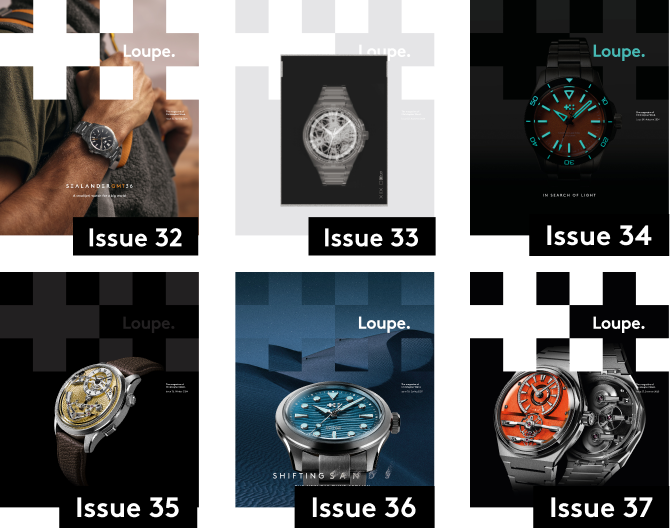
Sign up to Loupe magazine
Loupe is Christopher Ward’s quarterly in-house magazine. If you want to know what’s happening at CW (and you love great journalism), this is where to start. Alternatively, you can read all our back issues on your computer, tablet or phone.
Order your free copyRead Loupe online


